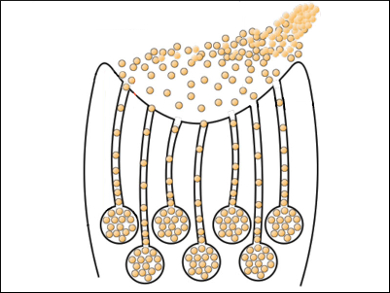Methods to seal tissue leaks, to attach devices, and to join tissues together represent a significant challenge during minimally invasive surgeries. Current techniques include sutures and staples, which are difficult to perform.
Tissue glues are a promising alternative. However, conventional tissue glues are applied in a low viscosity state and easily dilute in the wet surgical fields. Polymeric glues on the other hand allow a more precise application due to their higher viscosity, but a drawback here is the challenge of delivery through small-bore needles.
Jeffrey Karp, Harvard Medical School, Cambridge, USA, and colleagues were inspired by the granule-packaged glue delivery system of the sandcastle worm and developed a nanoencapsulated viscous glue that can be easily applied. A highly viscous hydrophobic light-activated poly(glycerol sebacate)-acrylate polymer is coated by negatively charged alginate forming easily injectable nanoparticles of the glue. By the subsequent application of a positively charged polymer, the nanoparticulated glue quickly coalesces into a viscous glue with similar properties to the native poly(glycerol sebacate)-acrylate polymer.
- Bioinspired Nanoparticulate Medical Glues for Minimally Invasive Tissue Repair,
Yuhan Lee, Chenjie Xu, Monisha Sebastin, Albert Lee, Nathan Holwell, Calvin Xu, David Miranda Nieves, Luye Mu, Robert S. Langer, Charles Lin, Jeffrey M. Karp,
Adv. Healthcare Mater. 2015.
DOI: 10.1002/adhm.201500419



